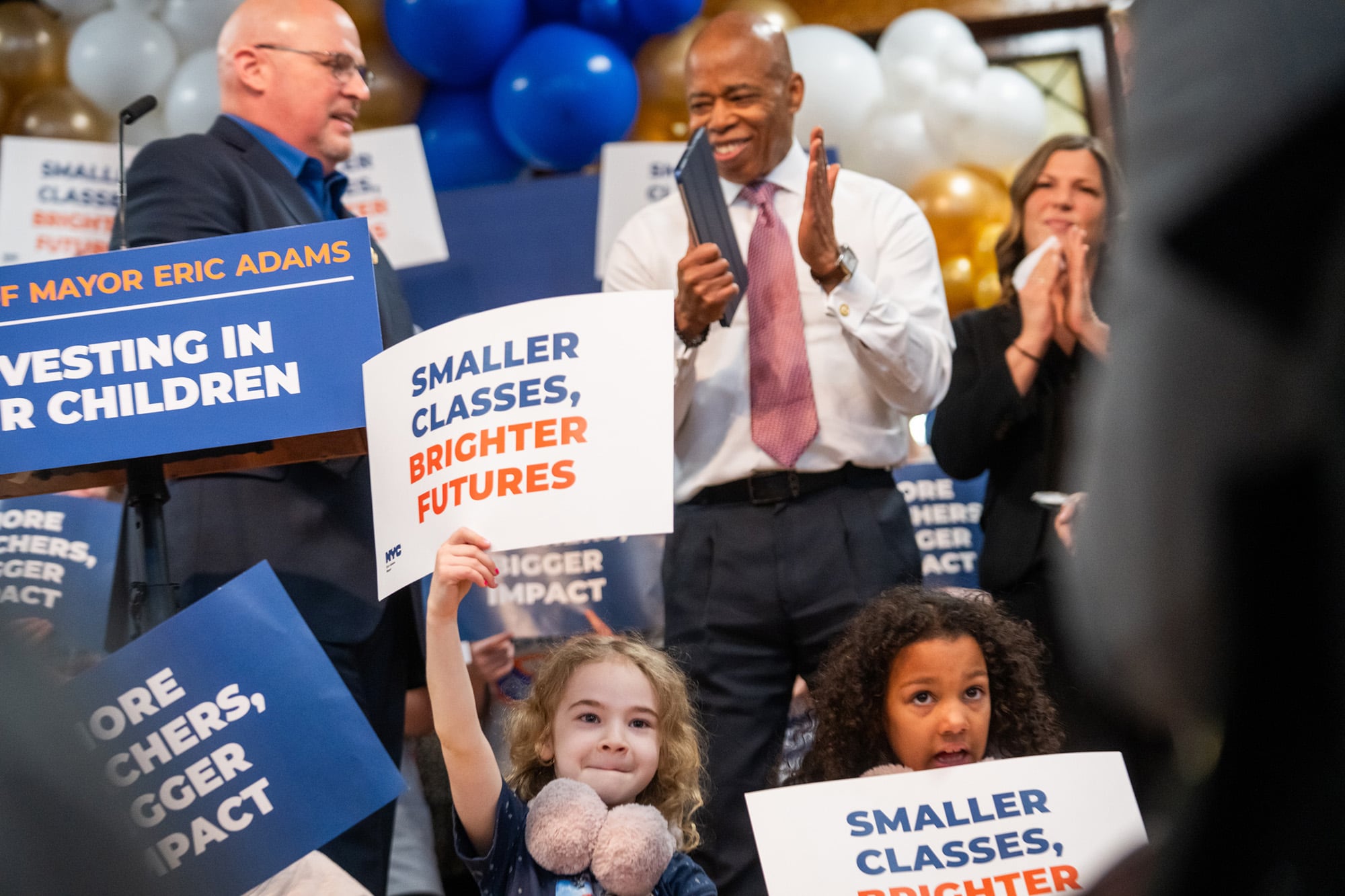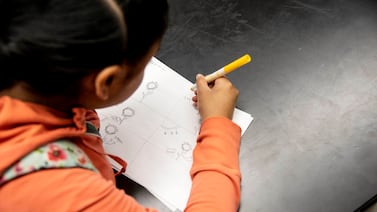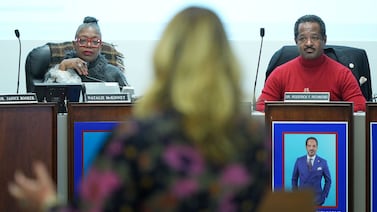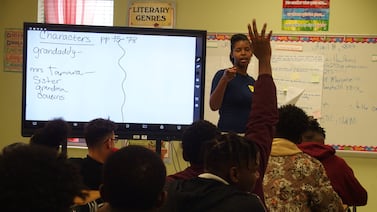Sign up for Chalkbeat New York’s free daily newsletter to get essential news about NYC’s public schools delivered to your inbox.
New York City released a detailed list Tuesday of which public schools are getting money to hire additional teachers to help reduce class sizes next year — and how many they can hire.
In order to give school communities a better sense of what the new hiring push will look like on their campuses, Chalkbeat created a searchable table showing how many new teachers were assigned to each of the 741 schools awarded new teacher funding.
The number of new teachers assigned to schools ranged from a high of 31 at M.S. 158, Marie Curie middle school, in Bayside Queens, to just one additional teacher at more than 60 schools, including the East Village Community School in Manhattan and the Brooklyn Brownstone school.
If a school’s name does not appear in the table, that means that the school either did not apply for the class size reduction funding, or its plan was not approved.
The detailed list comes more than a month after city officials first announced plans to hire some 3,700 new teachers by next fall to help the city comply with the state’s 2022 class size law.
Under the law, 60% of classrooms citywide must meet the caps — which limit classes to between 20 and 25 students depending on the grade level — by next September. As of earlier this school year, roughly 46% of classes were at or below the caps.
To meet next year’s deadline, city officials gave schools the option to apply for additional funding for next year to help lower class sizes. Some 800 schools applied, and about 750 of those plans were approved by a review committee of officials from the Education Department and the teachers and principals unions.
The lion’s share of the new resources will go toward hiring roughly 3,700 additional teachers. Officials said they also allocated some funds to hire new administrators to oversee those extra teachers and to help schools make small space adjustments.
The new teacher hires will come on top of the 4,000-5,000 teachers that the city has to hire in a normal year to replace educators who leave — creating a massive new hiring opportunity and challenge for schools.
That elevated hiring will likely continue for years as new class size deadlines get phased in.
“Accounting for new hires due to class size compliance and our standard annual new hires, [New York City Public Schools] needs to hire over 20,000 teachers between now and September 2028,” officials wrote in a draft class size reduction plan released Tuesday.
Officials recently shared that they expect the new reduction plans to cost more than $400 million. Mayor Eric Adams committed $150 million of that in his executive budget earlier this month, and roughly $241 million will come from increased state aid, city Education Department officials said. City officials are still searching for funding to cover the remaining gap.
The new teacher funding went disproportionately to schools with a lower student poverty rate — likely a reflection of the fact that those schools are more likely to have more classrooms over the caps and therefore need more teachers to lower class sizes.
“We did see more applications for more teachers from schools in our comparatively better-off communities,” Emma Vadehra, the Education Department’s deputy chancellor for operations and finance, told the City Council at a budget hearing on Wednesday. The new teachers “are tending to go more to Queens, south Brooklyn, Staten Island, where schools are farther from compliance, than to some of those higher-need communities.”
Schools in the lowest 25% of student poverty rates citywide are getting 42% of the new teachers, while schools in the highest quartile for student poverty are getting 15% of the new teachers, a Chalkbeat analysis found. (Schools in the lowest student poverty quartile enroll about double the number of students as those in the highest-poverty quartile, so per capita, the difference in new teacher funding is less extreme).
About 58% of schools in the lowest-poverty quartile got some amount of new teacher funding, compared to 34% of schools in the highest-poverty quartile.
Schools in Queens are getting 1,289 of the new teachers, more than the Bronx and Manhattan combined, a Chalkbeat analysis found.
The number of teachers a school is funded for isn’t a guarantee that they’ll hire that many teachers.
Officials said the hiring spree is underway, with fairs happening across many districts. Schools Chancellor Melissa Aviles-Ramos said the Education Department is working with district superintendents to develop plans to market their neighborhoods and schools to prospective teachers. The city is also offering monetary bonuses for teachers who commit early in areas of the city that have historically been harder to staff, she said.
To see how many new teachers your school was assigned, you can search the school’s name in the table below.
Data analysis and table by Thomas Wilburn.
Michael Elsen-Rooney is a reporter for Chalkbeat New York, covering NYC public schools. Contact Michael at melsen-rooney@chalkbeat.org





